Plant Flowers WITH Your Vegetables
Tip No. 3 for Developing a Green Thumb
I don’t believe anyone is born with a green thumb, but there are some things “green thumb people” do that other people do not. In this series, I’m sharing the Top 10 things I’ve learned to do that have developed my green thumb.

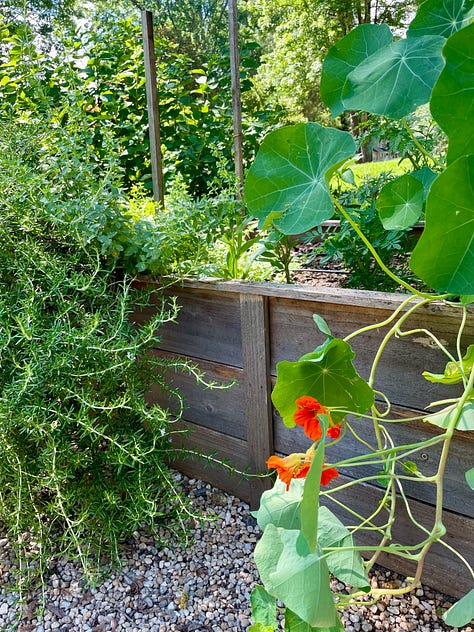
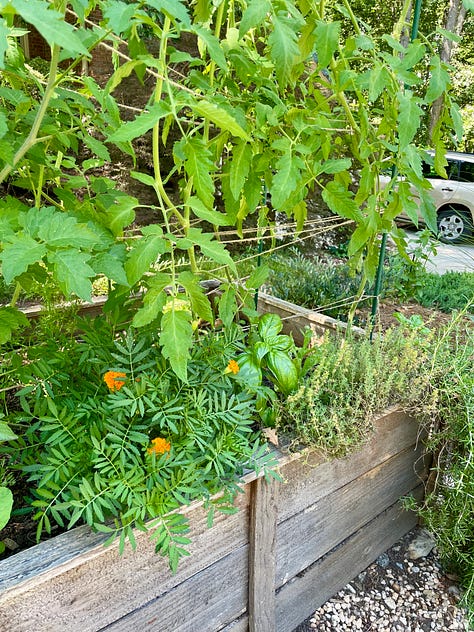
Green Thumb Tip No. 3: Plant Flowers WITH Your Vegetables
Flowers attract pollinators and beneficial predator species, which equals more food YOU get to eat. You want to create an ecosystem.
They also just make your veggie garden more attractive overall, and that creates extra enjoyment.
When people tell me they tried growing X last year and it just didn’t work out, I always ask, “Did you plant anything else with it?”
Nine times out of 10 they just tried to grow one or two vegetables all by themselves.
I like to layer in marigolds, nasturtiums, borage, bachelor’s buttons, echinacea, calendula, sunflowers, zinnias, salvia and more. Many of those are also edible and pretty thrown into salads.
The smaller flowers and trailing flowers (like marigolds, calendula and nasturtiums) work well planted right there in the raised beds mixed in and among the herbs and vegetables. I landscape around my raised beds with the larger flowers.
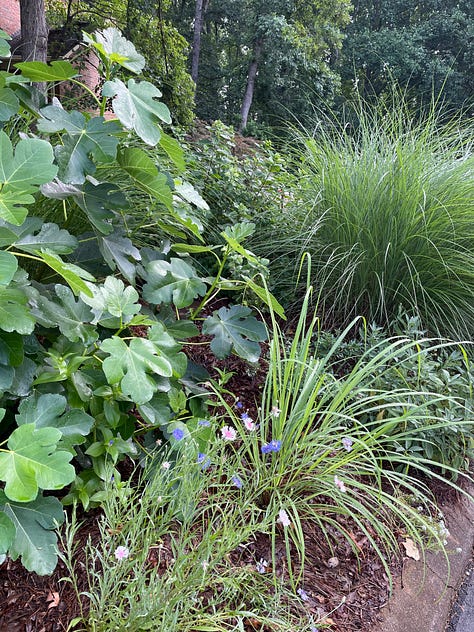
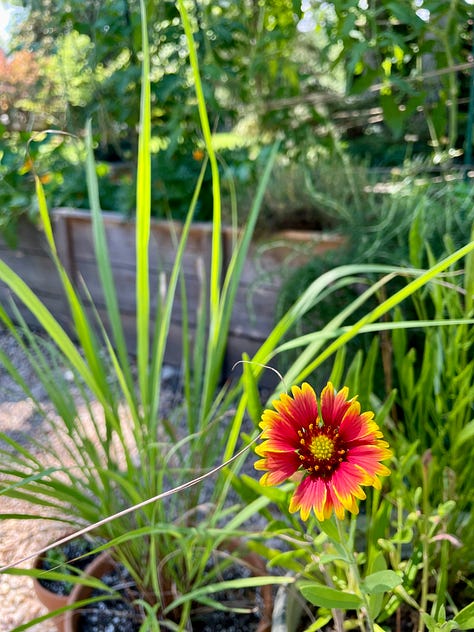
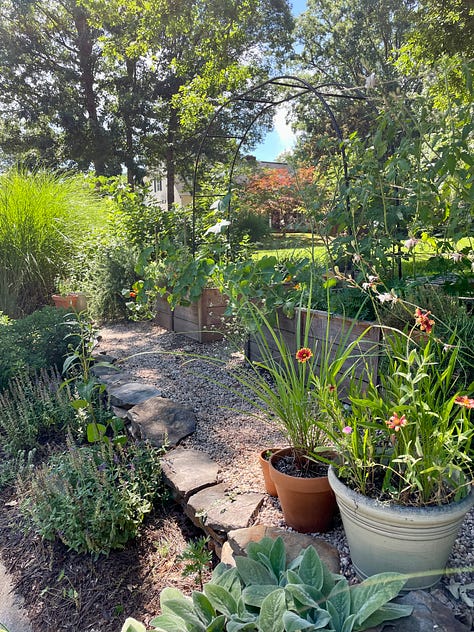
You can also let perennial herbs like thyme and rosemary flower without sacrificing the plant, and the bees love them. (Be careful letting herbs in the mint family flower… you’ll have 1000s of baby mint plants.)
Another note: The spacing guidelines on seed packets are for farmers trying to get the highest yield possible. If you’re growing in raised beds or another small space, you don’t necessarily have to follow what’s on the packet.
For a nice full look in a raised bed garden, I heard Monty Don say one time not to space plants more than a hand-width apart. Now, that clearly doesn’t work for larger plants like zucchini, tomatoes, etc., but I’ve found it works well to get a full look with flowers, herbs, and smaller space veggies like carrots or radishes.
There’s no reason a kitchen garden shouldn’t be beautiful, especially when beauty is what draws in the very species your garden depends on to thrive!
Read the other articles in this series:
No. 2 » Value the Full Lifecycle of Your Plants
I share more tips like this to help you become a gardener in my zine “The Uncomplicated Gardener” available from Good Printed Things!

